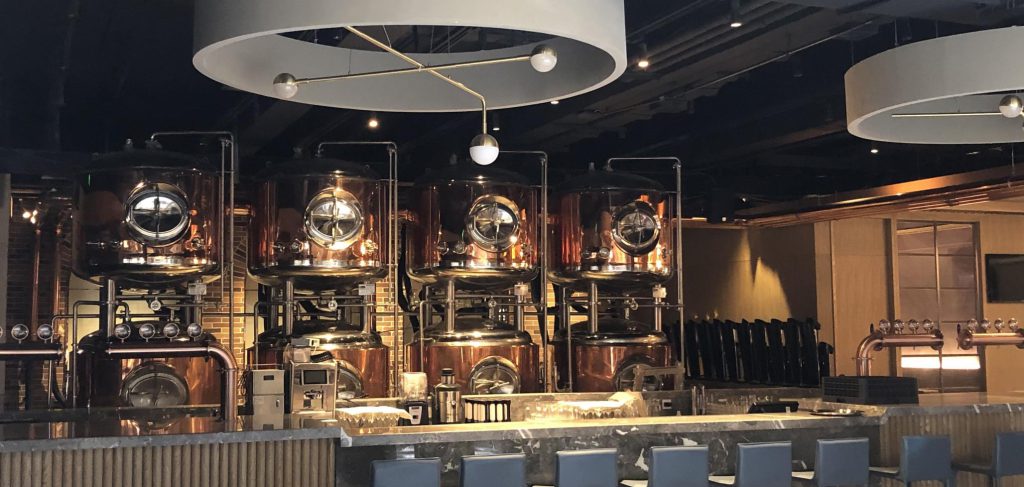Introduction

Brewery tanks are the backbone of any successful craft brewery. They come in various types and sizes, each designed for specific purposes in the brewing process. Understanding the differences and knowing what to look for in brewery tanks will help you make informed decisions that align with your brewery’s needs and goals.
Types of Brewery Tanks
When selecting brewery tanks, it’s crucial to understand the different types available. Each tank serves a specific function in the brewing process:
Fermentation Tanks
Fermentation tanks are where the magic happens. After wort is brewed, it’s transferred to fermentation tanks where yeast converts the sugars into alcohol and CO2. These tanks are designed to handle the pressure and temperature variations during fermentation.
Bright Tanks
Bright tanks, also known as conditioning tanks, are used for the secondary conditioning of beer. They help clarify the beer by allowing sediment to settle and can be used for carbonation.
Serving Tanks
Serving tanks are used to store and dispense beer. They maintain the beer’s freshness and carbonation until it’s ready to be served.
Storage Tanks
Storage tanks are used for holding large quantities of beer before it’s packaged or served. They are designed for bulk storage and are typically larger in size compared to fermentation and serving tanks.
Key Factors to Consider When Choosing Brewery Tanks
Selecting the right brewery tanks involves several critical considerations. Here are the main factors to keep in mind:
Size and Capacity
The size of the brewery tanks should align with your production needs. Consider the scale of your operation and how much beer you plan to produce. Brewery tanks come in various capacities, from small pilot systems to large commercial tanks.
Material
Most brewery tanks are made from stainless steel due to its durability, resistance to corrosion, and ease of cleaning. Stainless steel is a preferred material for maintaining the quality and safety of your beer.
Insulation
Proper insulation is essential for maintaining consistent temperatures during brewing and fermentation. Insulated tanks help in energy efficiency and temperature control, which are critical for producing high-quality beer.
Temperature Control
Effective temperature control is crucial for the fermentation process. Look for tanks equipped with temperature control systems, such as glycol jackets or cooling coils, to ensure precise temperature management.
Cleaning and Maintenance
Brewery tanks should be easy to clean and maintain. Features such as sanitary design, CIP (Clean-in-Place) systems, and access ports can facilitate efficient cleaning and maintenance routines.
Compatibility with Other Equipment
Ensure that the brewery tanks you choose are compatible with other equipment in your brewery, such as pumps, hoses, and filtration systems. Compatibility can affect the efficiency of your brewing process.
Budget
Your budget will play a significant role in your decision-making process. While it’s tempting to opt for the cheapest option, investing in high-quality brewery tanks can save you money in the long run through increased durability and reduced maintenance costs.
Brewery Tank Specifications Table
To help you better understand the different types of brewery tanks and their specifications, here is a comparative table:
| Tank Type | Capacity Range | Material | Features | Typical Use |
|---|---|---|---|---|
| Fermentation Tank | 5 to 500+ gallons | Stainless Steel | Temperature control, pressure relief | Fermentation |
| Bright Tank | 10 to 500+ gallons | Stainless Steel | Carbonation, sediment control | Secondary conditioning |
| Serving Tank | 10 to 100+ gallons | Stainless Steel | Draft dispensing, carbonation maintenance | Serving |
| Storage Tank | 50 to 1000+ gallons | Stainless Steel | Bulk storage, insulation | Bulk storage |
How Brewery Tanks Impact Beer Quality

The quality of your beer can be significantly influenced by the brewery tanks you use. Here’s how different factors affect beer quality:
Material Quality
Stainless steel tanks prevent contamination and off-flavors, ensuring your beer remains pure and fresh. Avoid tanks made from materials that may react with beer ingredients.
Temperature Consistency
Inconsistent temperatures can lead to fermentation issues and off-flavors. High-quality brewery tanks with reliable temperature control systems ensure consistent conditions, leading to better beer quality.
Cleanliness
Sanitary design and easy-to-clean features are essential for preventing contamination and maintaining the quality of your beer. Regular cleaning and maintenance are crucial for preserving the integrity of your beer.
Conclusion
Choosing the right brewery tanks is a fundamental step in establishing a successful craft brewery. By considering factors such as tank type, size, material, and features, you can make informed decisions that align with your brewing goals. Investing in high-quality tanks will enhance your brewing efficiency, improve beer quality, and support the growth of your brewery.
FAQ
Q:What is the difference between fermentation tanks and bright tanks?
A:Fermentation tanks are used for the initial fermentation process where yeast converts sugars into alcohol. Bright tanks, on the other hand, are used for secondary conditioning and clarifying the beer before serving.
Q:How important is insulation in brewery tanks?
A:Insulation is crucial for maintaining consistent temperatures during the brewing and fermentation process. It helps in energy efficiency and ensures that your beer is brewed under optimal conditions.
Q:Can I use the same tank for fermentation and serving?
A:While it’s possible to use the same tank for both fermentation and serving, it’s generally not recommended. Different stages of brewing require different conditions, so having separate tanks for each stage is ideal.
Q:What should I consider when budgeting for brewery tanks?
A:When budgeting for brewery tanks, consider the initial cost, long-term durability, maintenance costs, and any additional features such as temperature control systems. Investing in quality tanks can save you money in the long run.
Q:How do I determine the right size of brewery tanks for my operation?
A:Determine the size of brewery tanks based on your production goals and scale of operations. Consider your brewing capacity, growth projections, and the space available in your brewery.

